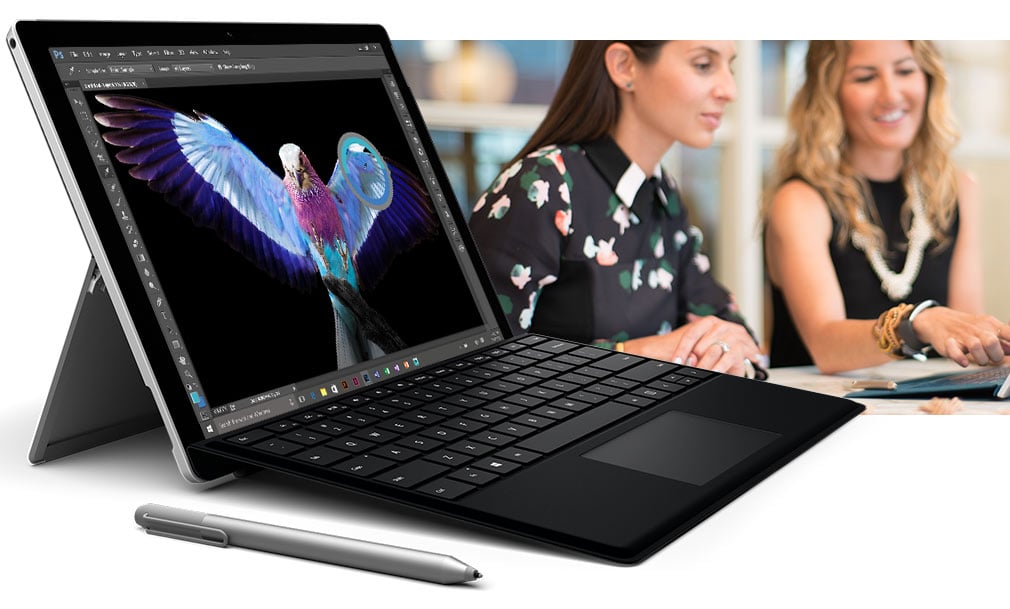Microsoft unveils new surface Pro device to reverse sales drop
May 23, 20171.3K views0 comments
Microsoft Corp. unveiled a new version of its Surface Pro tablet and laptop combination device with more powerful chips and better battery life, updating an aging product with declining sales that hurt financial results last quarter.
The Redmond, Washington-based company introduced the fifth version of the Surface Pro at an event in Shanghai, the first time it’s held the launch of a major product outside the U.S. Microsoft also announced a version of Windows 10 for use by the Chinese government and state-owned enterprises, ending a standoff over the operating system by meeting the government’s requests for increased security and data control.
Surface Pro is the workhorse of the company’s computer hardware line. It’s the biggest seller among the Surface devices, a category that Microsoft created — the two-in-one, or a tablet with a removable keyboard. Yet Microsoft’s Pro 3 and 4 are aging, and partners like Lenovo Group Ltd. and HP Inc. have come out with their own Windows-based versions, that give Microsoft software revenue but take away hardware sales. Meanwhile Apple’s take on the category, the iPad Pro, has been stealing market share.
Those factors contributed to a 26 percent drop in Surface sales last quarter. The new version should turn that around, said Yusuf Mehdi, who oversees marketing for devices and Windows. The device has 13.5 hours of battery life, a 50 percent improvement over the previous version, and runs Intel Corp.’s faster seventh generation Core chips.

“We have shown it to corporate accounts already and the reaction has been very positive,” he said. “We are optimistic this will get a good start out of the gate.”
The Pro will be available for pre-orders Tuesday starting at $799 and goes on sale June 15, the same day as the Surface Laptop Microsoft announced earlier this month. The device has a new kickstand that lets it fold almost flat to resemble a drafting table, similar to the pricier Surface Studio computer, and the Pro can now be controlled on screen by the Surface Dial device that Microsoft introduced with the Studio.
Custom Windows
Microsoft also announced customers for the Chinese government version of Windows 10, including the Chinese customs agency and the city government of Shanghai. This version of Windows 10 lets the government use its own encryption on its computers. A joint venture in China manages all the system updates and telemetry so no data leaves China, Terry Myerson, Microsoft’s Windows and Devices chief, said in an interview.
The government can also remove features it doesn’t want like the OneDrive file-sharing service, or certain entertainment apps. The software is available only for government use and won’t be sold to any other Chinese customers, Microsoft said.
Operating in China has been something of a minefield for U.S. technology companies. Some are blocked, Microsoft is facing an antimonopoly investigation and in January a law took effect that requires telecommunications and internet companies operating in China to provide law enforcement with technical assistance, including decryption of sensitive user data, in any probe meant “to avert and investigate terrorist activities.”
Myerson said the custom version of Windows fully complies with the company’s values.
“We are aware this could be perceived as a sensitive issue but it’s quite appropriate for a sovereign country, within its own computer system and its own employees to have its own encryption systems,” Myerson said.
Long Negotiations
The product is the result of two years of work by the company and the Chinese government to resolve an impasse in which the government, citing security concerns, has refused to use either Windows 8 or Windows 10, blocking a key source of Chinese revenue for Microsoft.
Microsoft also announced that it’s bringing its full lineup of Surface hardware to the Chinese market. Currently, it only sells the Pro models and the Surface Book laptop in the country.
The company will also show a new Office app that lets a team of users create a digital whiteboard that they can all draw on simultaneously on different machines.
Courtesy Bloomberg
